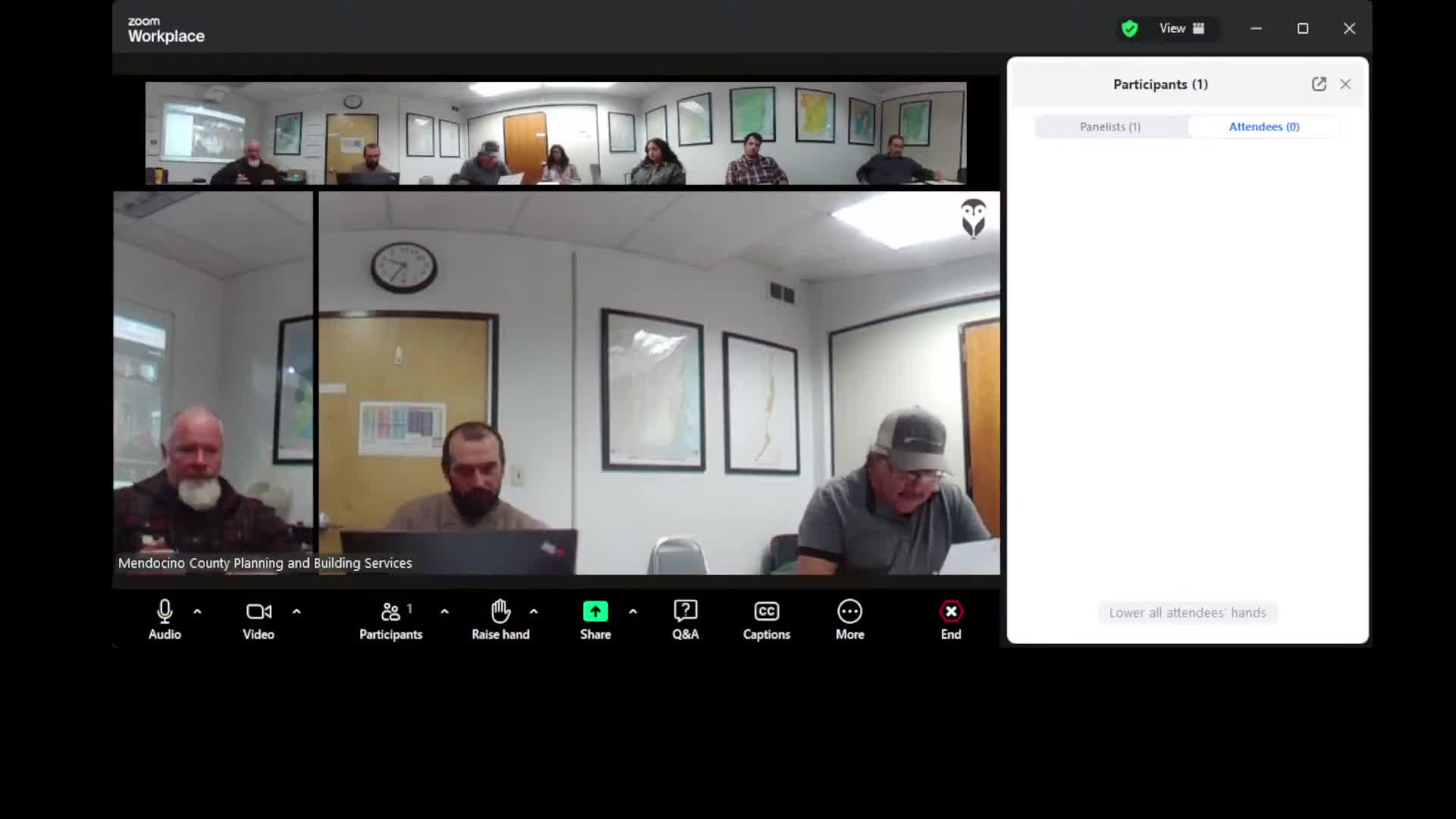University extension forester warns Mediterranean oak borer is established in parts of Mendocino County
October 15, 2025 | Mendocino County, California
This article was created by AI summarizing key points discussed. AI makes mistakes, so for full details and context, please refer to the video of the full meeting. Please report any errors so we can fix them. Report an error »

Mike Jones, an extension forester with the University of California, told the Mendocino County Fish & Wildlife Commission that the Mediterranean oak borer — an ambrosia beetle from the Mediterranean region — has been detected in parts of the county and likely arrived in wine‑industry material.
Jones said the insect carries a symbiotic fungus it farms inside trees and that both the beetle and its fungus contribute to tree decline. “They literally farm the fungus both the adults and the and the larvae,” he said, describing the pest’s biology and how the fungus can block a tree’s water transport.
The commission heard that the pest favors large, older valley oaks and appears to attack trees stressed by drought, heat or urban conditions. Jones said the insect was first recognized in California in 2019 and has been confirmed in counties along the 101 corridor; he reported confirmed detections in Hopland and likely presence in Potter Valley. “This insect is here, it’s not going away,” Jones said.
Jones told commissioners that the California Department of Food and Agriculture initially classified MOB as a “Group B” pest, a designation he said reduces the prospect of state funding for large response efforts because the agency directs major resources toward pests classified as higher risk to agriculture. He urged local governments to plan for monitoring, outreach and restrictions on moving infested material: post‑fire cleanup and disposal of firewood and other oak material are likely pathways for spread.
Commissioners asked about management options; Jones said research is underway into combined insecticide and fungicide treatments, supplemental irrigation to reduce tree stress, and targeted monitoring, but that early detection is difficult because the beetle attacks high branches first. He noted that warm bark temperatures (about 65°F under bark) trigger beetle activity, and that management is complicated by multiple generations per year.
Jones also warned the commission that related invasive ambrosia beetles and shot‑hole borer species remain a threat and recommended continued outreach to county officials, tribes and landowners to limit movement of infested material and to pursue funding for research and local management.
The commission did not adopt new county policy at the meeting; commissioners asked that the item remain on future agendas so staff and the extension forester can pursue outreach to county supervisors and tribal forest managers.
Jones said the insect carries a symbiotic fungus it farms inside trees and that both the beetle and its fungus contribute to tree decline. “They literally farm the fungus both the adults and the and the larvae,” he said, describing the pest’s biology and how the fungus can block a tree’s water transport.
The commission heard that the pest favors large, older valley oaks and appears to attack trees stressed by drought, heat or urban conditions. Jones said the insect was first recognized in California in 2019 and has been confirmed in counties along the 101 corridor; he reported confirmed detections in Hopland and likely presence in Potter Valley. “This insect is here, it’s not going away,” Jones said.
Jones told commissioners that the California Department of Food and Agriculture initially classified MOB as a “Group B” pest, a designation he said reduces the prospect of state funding for large response efforts because the agency directs major resources toward pests classified as higher risk to agriculture. He urged local governments to plan for monitoring, outreach and restrictions on moving infested material: post‑fire cleanup and disposal of firewood and other oak material are likely pathways for spread.
Commissioners asked about management options; Jones said research is underway into combined insecticide and fungicide treatments, supplemental irrigation to reduce tree stress, and targeted monitoring, but that early detection is difficult because the beetle attacks high branches first. He noted that warm bark temperatures (about 65°F under bark) trigger beetle activity, and that management is complicated by multiple generations per year.
Jones also warned the commission that related invasive ambrosia beetles and shot‑hole borer species remain a threat and recommended continued outreach to county officials, tribes and landowners to limit movement of infested material and to pursue funding for research and local management.
The commission did not adopt new county policy at the meeting; commissioners asked that the item remain on future agendas so staff and the extension forester can pursue outreach to county supervisors and tribal forest managers.
View full meeting
This article is based on a recent meeting—watch the full video and explore the complete transcript for deeper insights into the discussion.
View full meeting
